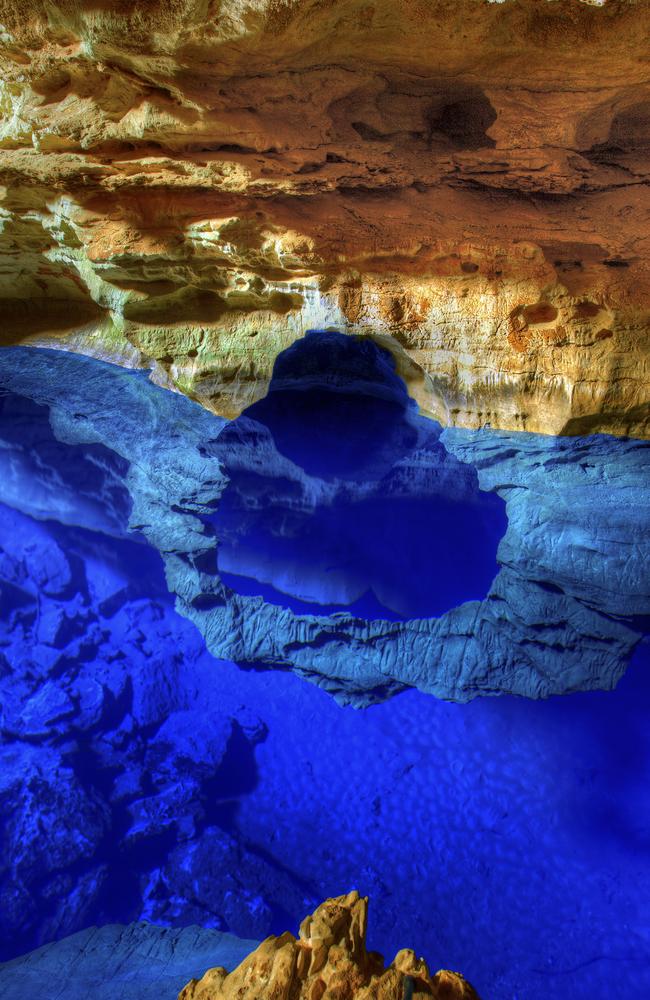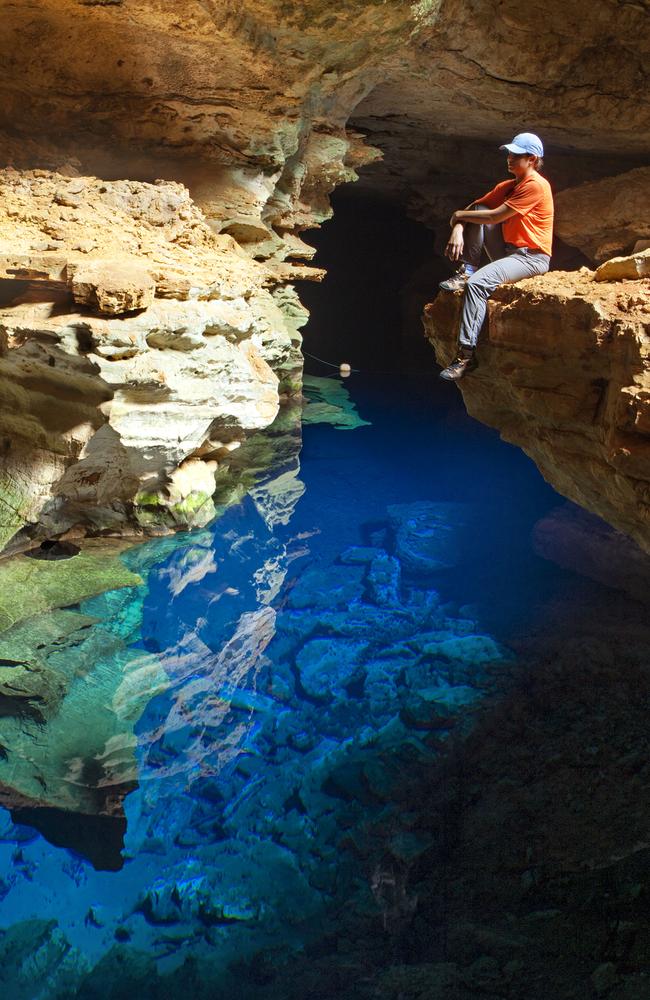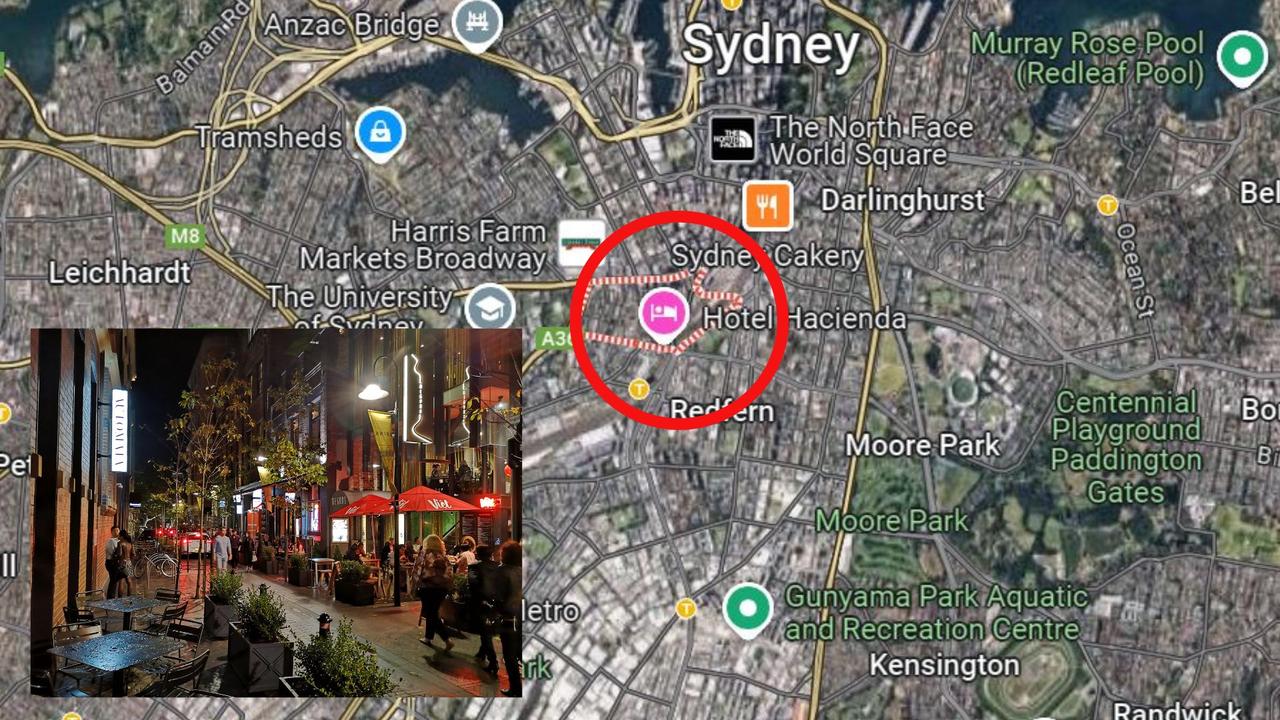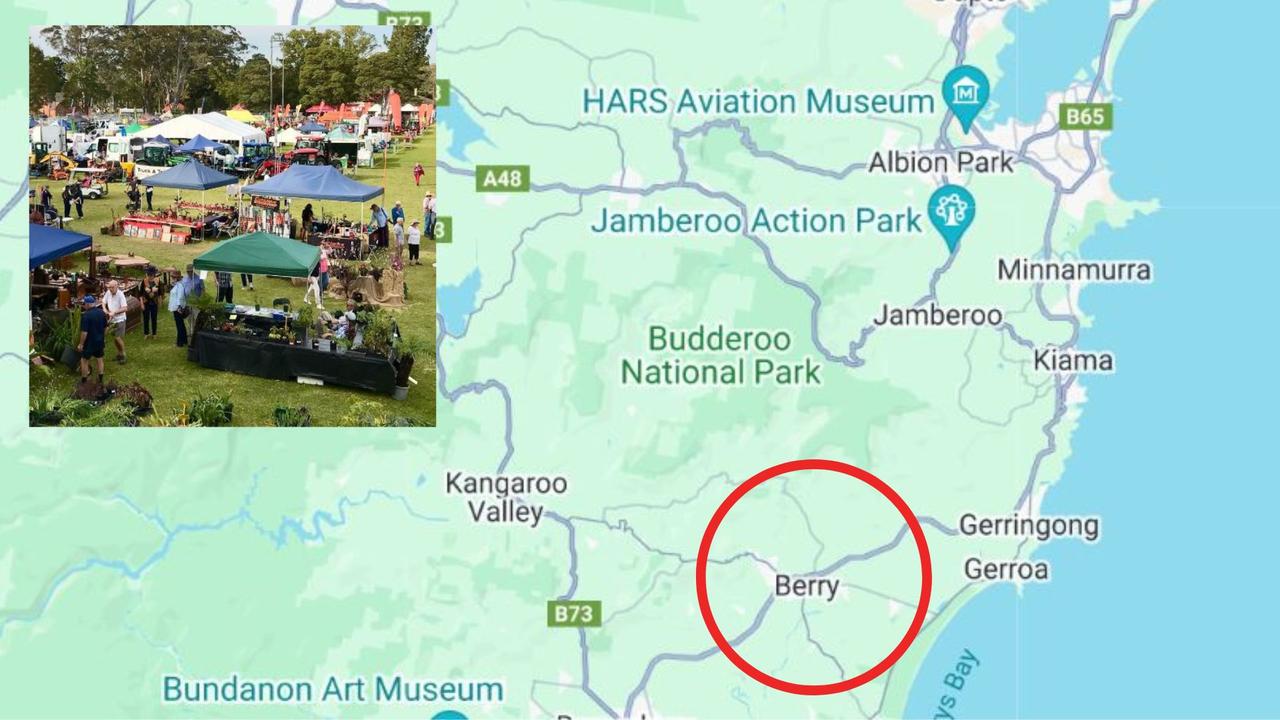The amazing ‘invisible’ pools of Brazil
AT FIRST glance this wondrous cave looks like an empty bottomless pit. But it’s a pit where you can snorkel and float in crystal clear warm water.
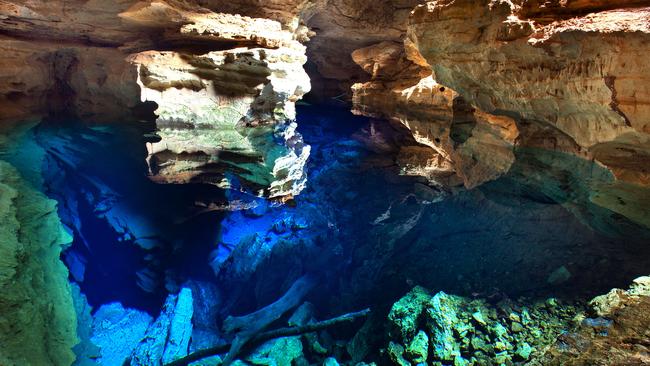
AT FIRST glance, you’d be forgiven for thinking this wondrous cave was just an empty bottomless pit. But do a double take and you’ll find the depths of the Poço Azul cavern, in Chapada Diamantina National Park, Brazil, have actually been flooded with a mystical invisible pool.
Photographer Marcio Duranc, 40, captured the sheer magnificence of the vast, 16m deep underground cave, which was discovered by a prospector in 1920 when looking for diamonds in the region.
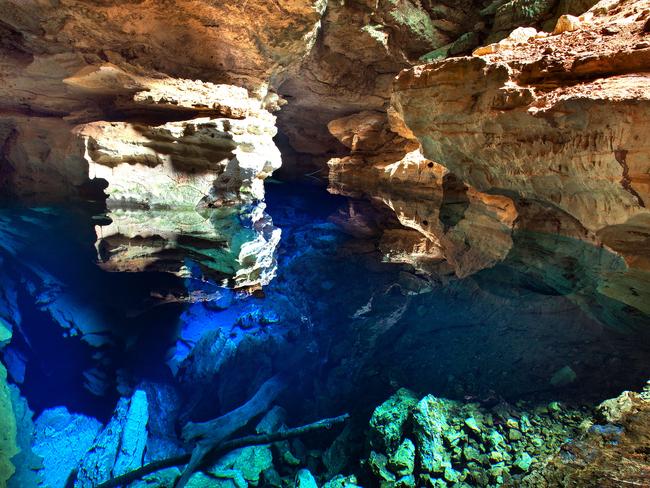
With its transparent crystalline blue water and submerged trees, it’s difficult to tell where the water — which is about 24 degrees celcius all year round — ends and the rock begins.
The pool’s ‘invisibility’ is caused by natural light seeping through a hole in the cavern wall, the sun’s rays then radiate the blue waters, forming a spectacle of rare beauty.
But lucky visitors to the electric blue pool, located on the outskirts of Igatu, are able to take a dip, giving them the impression that they’re floating in space.
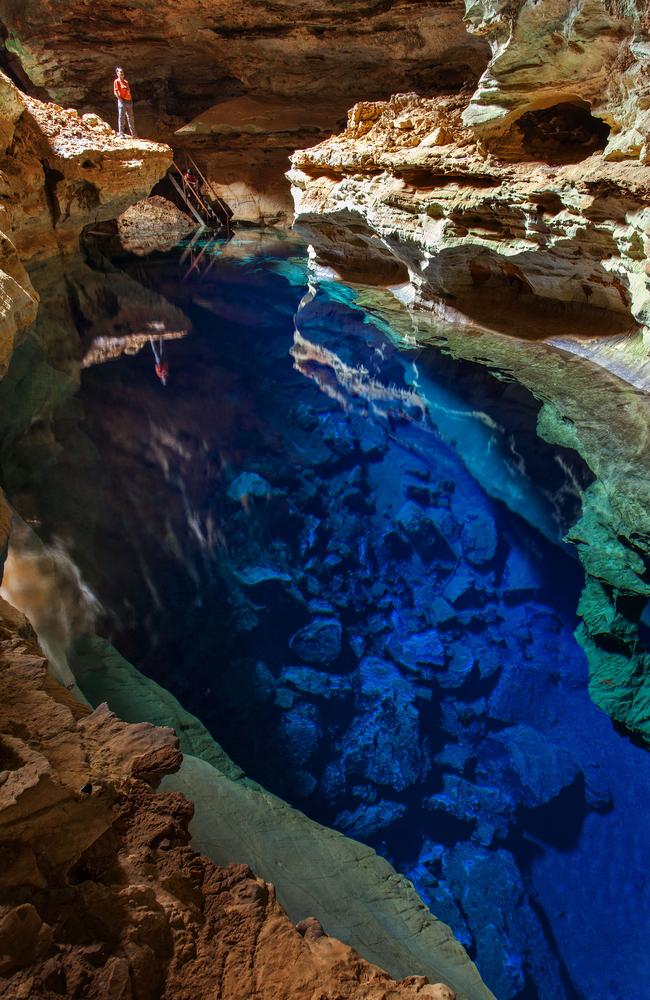
Marcio said, “A kind of place like this is not easily found, there are other lookalikes, but Poço Azul, with it crystal clear water and the deep blue colour, is something to enjoy and contemplate.
“The fact you can get into the water to snorkel and float make it even more special. Only small groups are allowed to get in so it never gets crowded or ruined by tourism, it’s a very controlled place, mostly because of preservation.”
The otherworldly cave is situated at the bottom of a sinkhole near the Paraguaçu River in Nova Redenção, on the eastern front of Chapada Diamantina. In the 1990s, it was explored by cave diver and film maker Tulio Shargel, who found a large bone hidden in the sediments at the bottom of the pool.
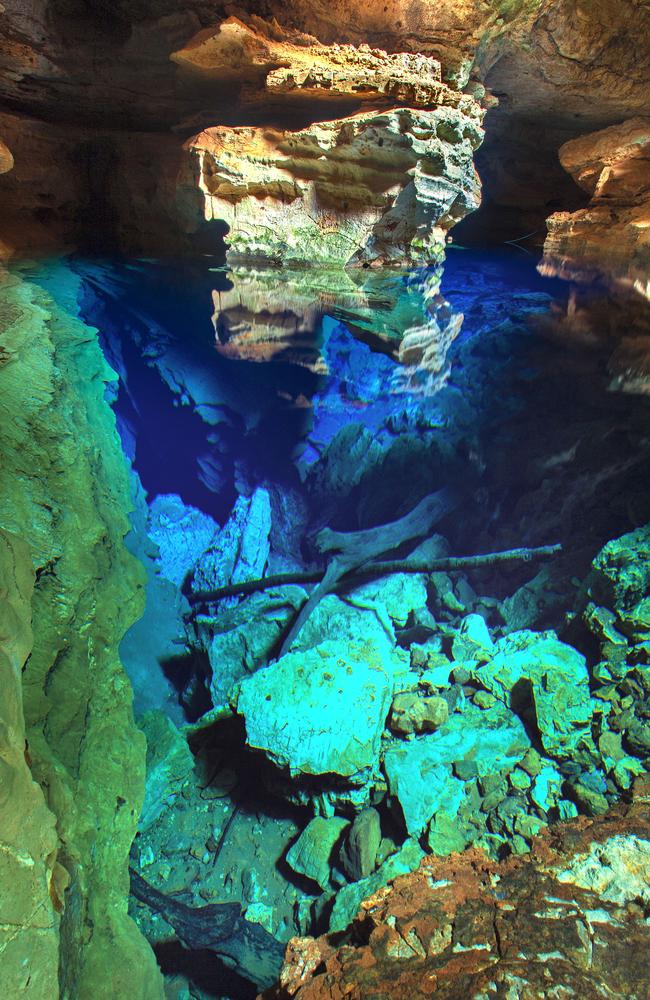
The bone was later identified as part of the skeleton of a giant five ton sloth which became extinct during the Pleistocene period, more than 11,000 years ago. Remarkably, a team of 30 aerologists then returned to the site to discover the remains of about forty different species of animals, most of them extinct.
Now the cave, known as the Blue Pit, has become one of the most popular tourists attractions of the Chapada, attracting hundreds of visitors each year.
Marcio said, “During the autumn, the sunlight will penetrate the cavern and hit the water making a very interesting solar ray until the bottom of the well. Flotation is allowed and it’s a total pleasure sensation as the water is not to cold, it’s the perfect temperature all year round.
“I think it’s one of the most special places in the world.”
